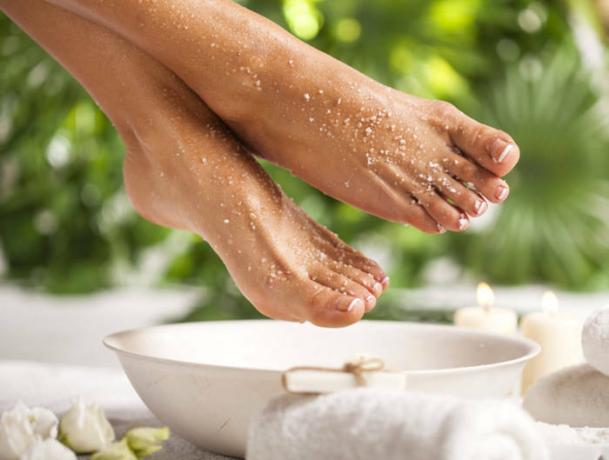Cracked heels are very uncomfortable, especially in summer. In addition to being aesthetically unattractive, the wounds often bleed - walking is painful and uncomfortable
The causes of cracks

Regular grooming is the secret to well-groomed heels / istockphoto.com

Regular grooming is the secret to well-groomed heels / istockphoto.com
The first beacons of this problem may appear even before the appearance cracks. Feet and heels may itch, and the skin may become rough and discolored - yellow and flaky. This suggests that the cells of the epidermis are not moisturized. In this case, the skin will deform, and every touch of the foot with the surface will injure the heel. Until the cracks appear.
Factors that increase the risk of wound formation are improper pedicure and foot care. Uncomfortable shoes, especially summer flip-flops and sandals that don't provide enough support for your feet, are another reason.
Cracked heels can also signal a lack of vitamins, namely A and iron. This problem often accompanies those who struggle with
fungus on foot. But the most dangerous cause is diabetes. Be sure to see a doctor if the heels do not heal for a long time.How to care for your heels
1. Peeling
Exfoliate rough heels at least once a week. Use scrubs or peels that contain moisturizing essential oils. Avoid salt formulations so as not to harm or aggravate the situation.

Use scrubs or peels / istockphoto.com
2. Baths
To soften the hardened epithelium, be sure to do foot baths. Soda-salt solutions do an excellent job with this, they make the skin of the heels pliable to friction with a pumice stone. Important: carry out the procedure only if there are no deep cracks.
3. Antiseptic treatment
To prevent viruses and bacteria from getting into the cracks, treat the skin with antiseptic agents. Chlorhexidine, for example. But do not use peroxide, it will corrode the skin.
4. Moisturizing
An important and basic recommendation is correct and constant hydration. We carefully monitor the skin of the face and hands, but we often forget about the feet. Give preference to pharmaceutical care products containing lanolin or propolis, essential oils. For lack of creams, lubricate your heels with regular petroleum jelly. The main thing here is the regularity of leaving.
5. Salon care
Professional care procedures by a podologist or pedicure master do an excellent job with the problem. Paraffin therapy, diamond resurfacing of heels are the main helpers in this matter.
6. The diet
To solve the problem, it is necessary to resume the drinking regimen in order to saturate the skin with moisture. Also, diversify your diet, introduce foods rich in vitamins A and E: seafood, cod liver, oily fish, avocado.
7. Shoes
Avoid tight shoes with multiple bindings and uncomfortable last. Prefer a small platform, a stable wide heel and natural materials. Low-speed bast shoes — slates and flip flops — can make matters worse.
You will also be interested in:
Cramping or sore heel: what diseases do your feet signal
Scientists: nail polish can be harmful to health

